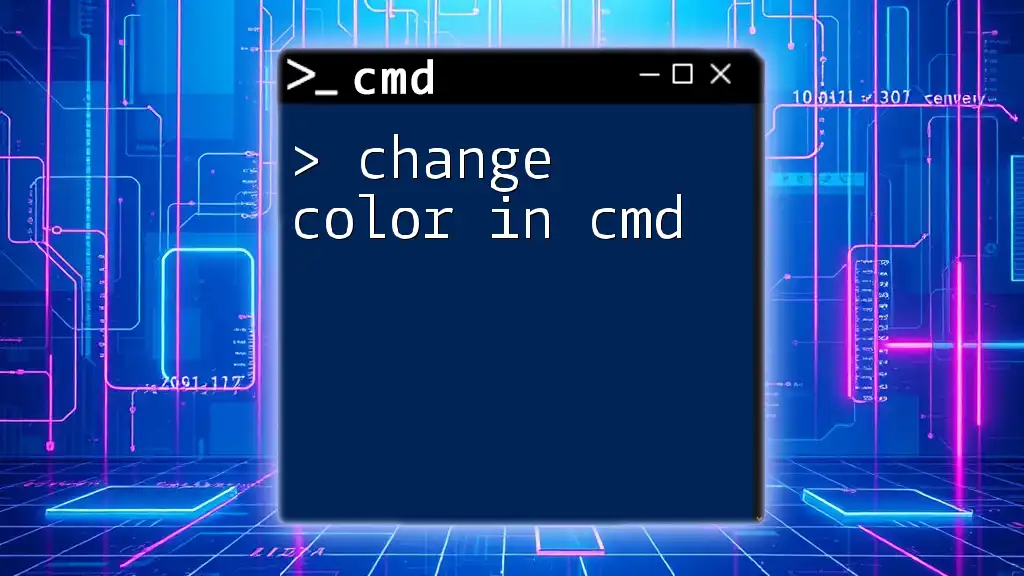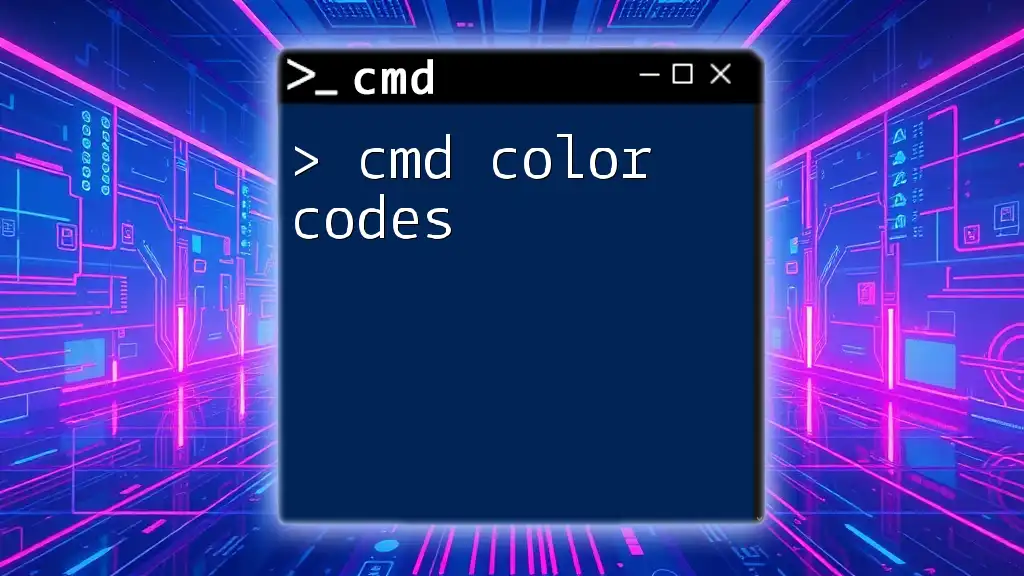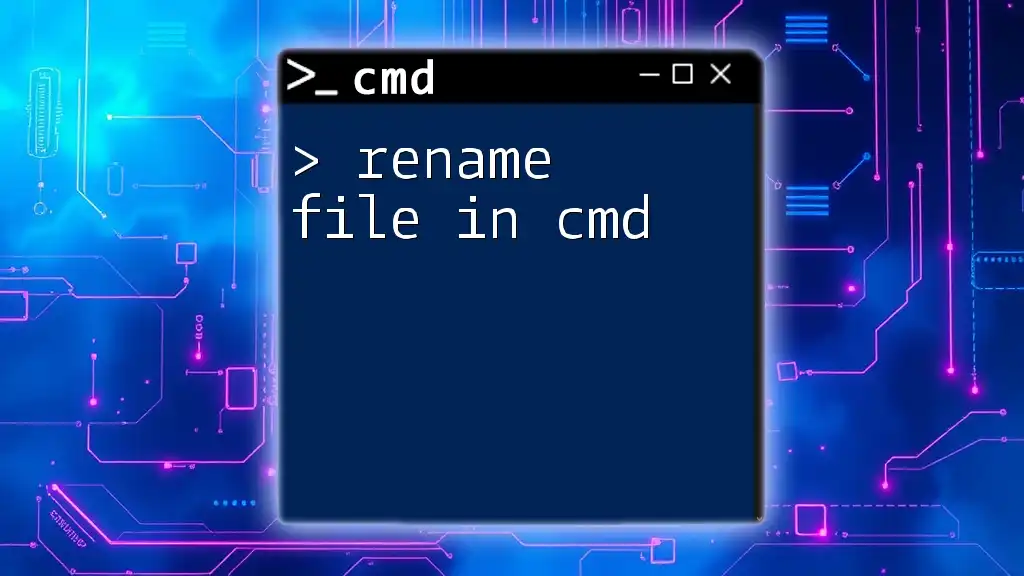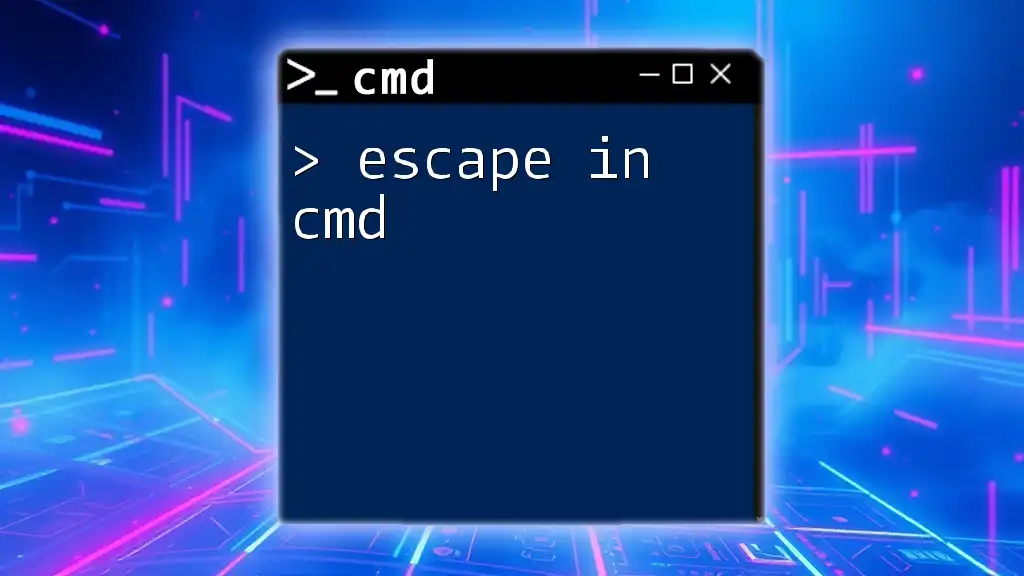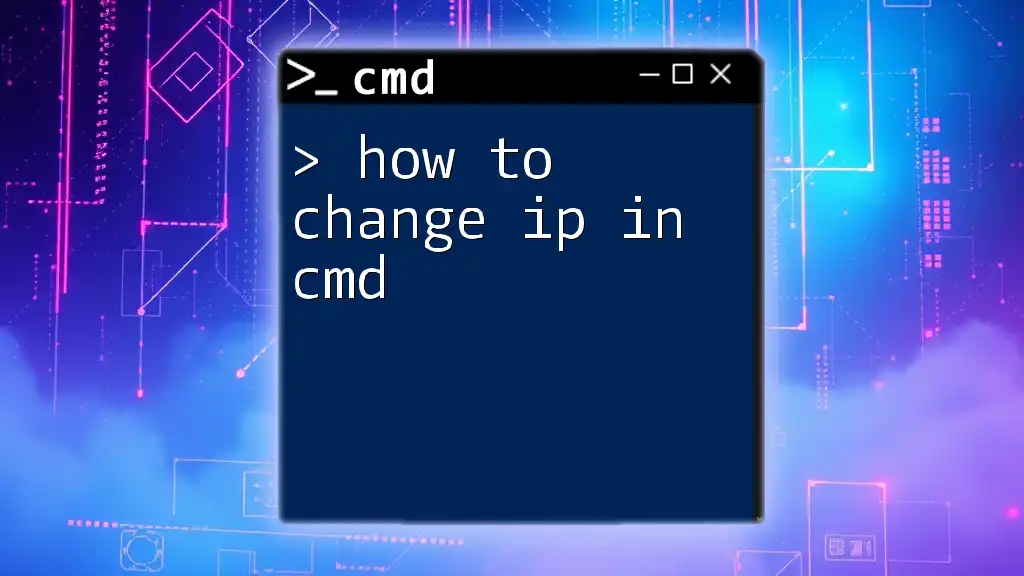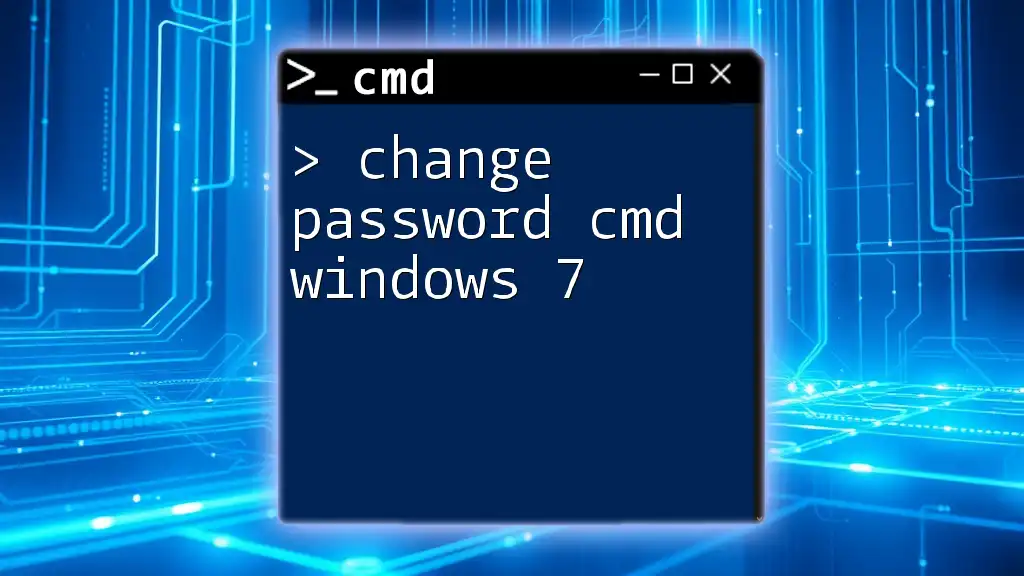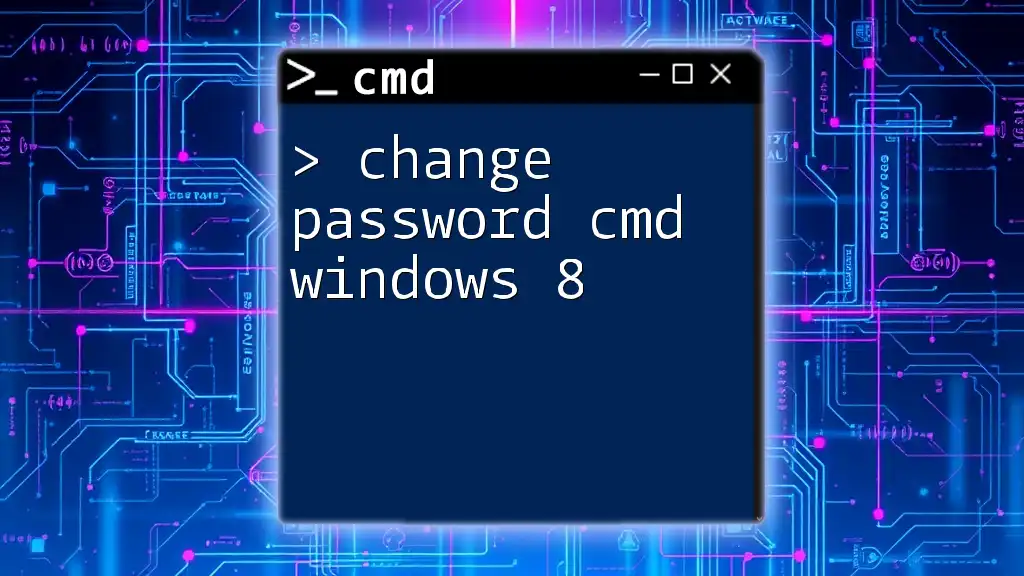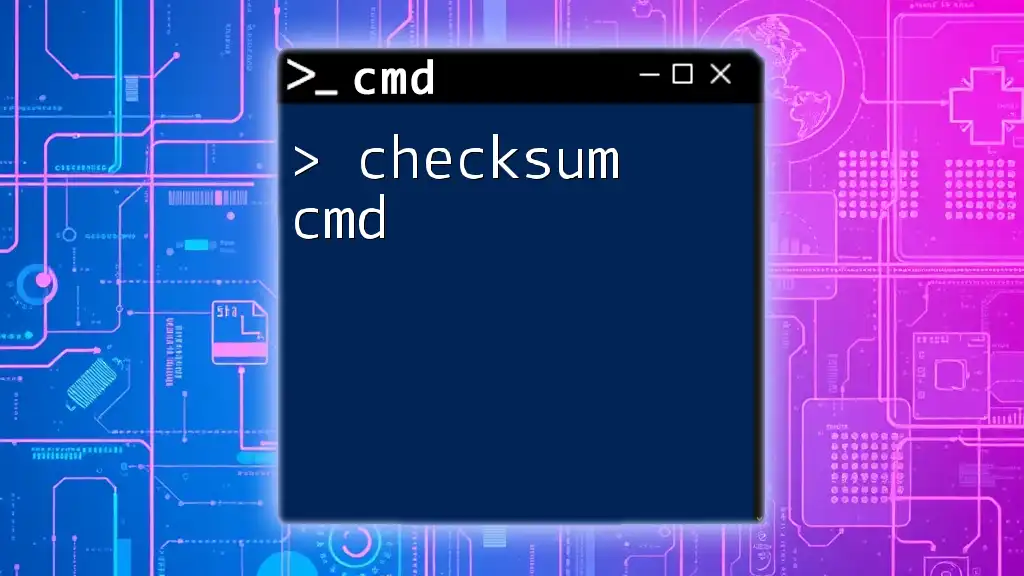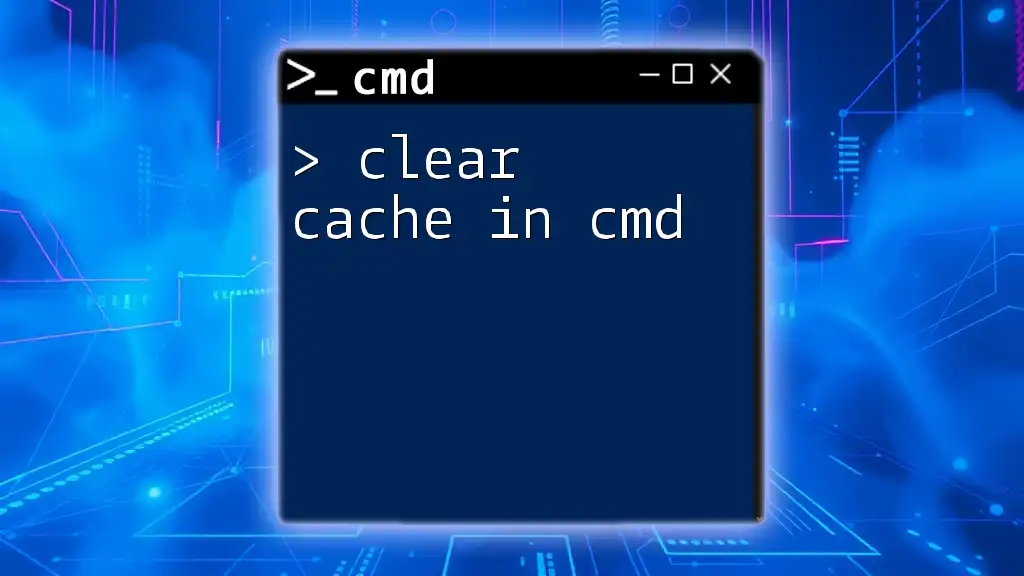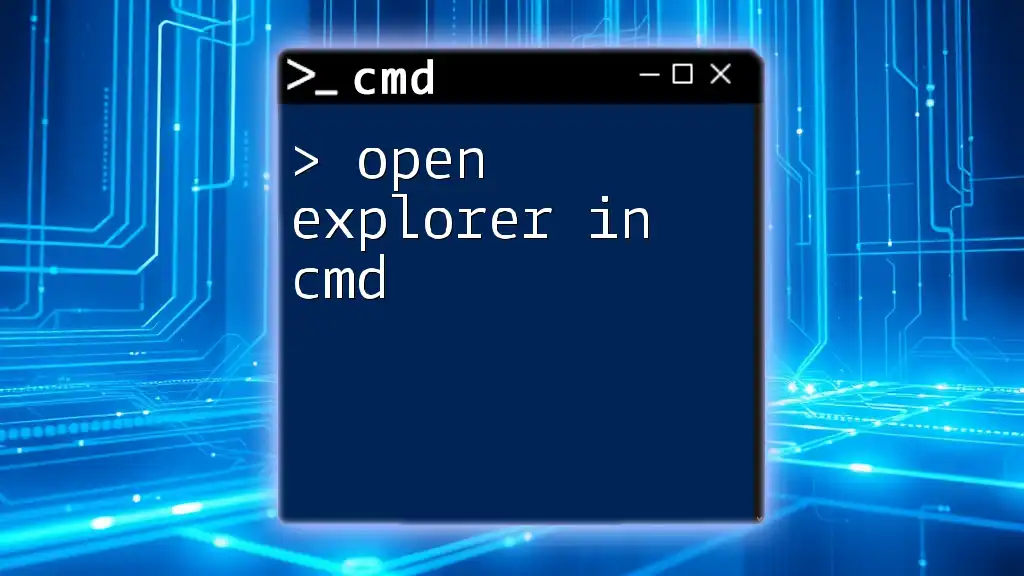To change the text and background color in the Command Prompt (cmd), use the `color` command followed by a two-digit code representing the desired foreground and background colors.
color 0A
In this example, `0` sets the background to black and `A` changes the text color to light green.
Understanding CMD Color Scheme
What is the Default CMD Color Palette?
The Command Prompt (CMD) operates on a default color scheme that might not suit everyone's visual preferences. By default, CMD typically displays white text on a black background. Understanding this color palette is essential when deciding how to customize it for better visibility or aesthetics.
The following color codes represent the default colors available in CMD:
- 0 = Black
- 1 = Blue
- 2 = Green
- 3 = Aqua
- 4 = Red
- 5 = Purple
- 6 = Yellow
- 7 = White
- 8 = Gray
- 9 = Light Blue
- A = Light Green
- B = Light Aqua
- C = Light Red
- D = Light Purple
- E = Light Yellow
- F = Bright White
Importance of Color Customization
Customizing the colors of CMD can significantly enhance readability while helping users avoid eye strain during prolonged sessions. For developers and IT professionals who spend substantial amounts of time in the command-line interface, personalizing the appearance can make a world of difference. Moreover, color customization allows users to create an environment that reflects their unique style, making command-line tasks less monotonous.
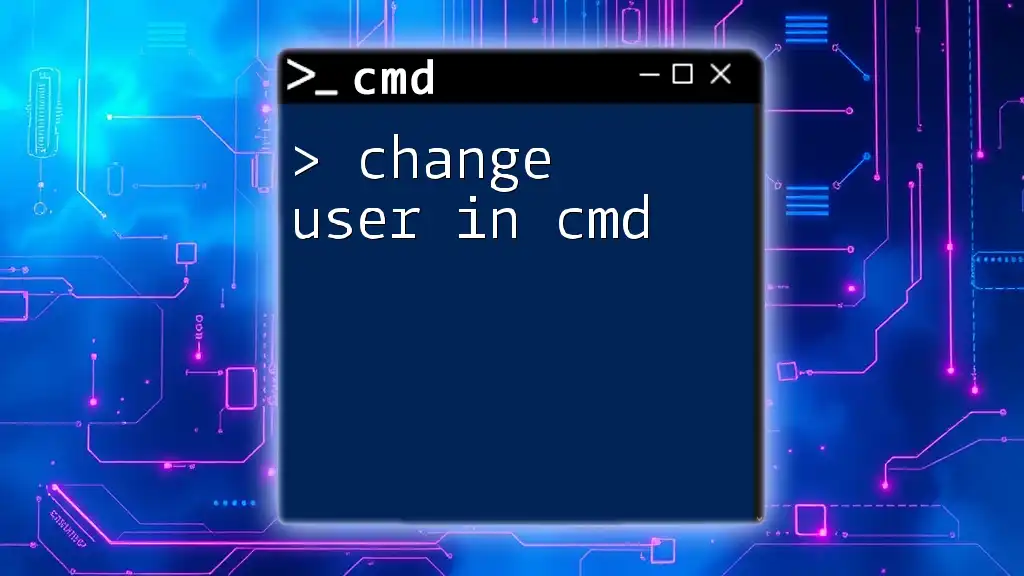
How to Change Color in CMD
Using the COLOR Command
Syntax of the COLOR Command
To change colors in CMD, you utilize the `COLOR` command. The syntax for this command is simple:
COLOR [attr]
Here, `[attr]` is a two-digit hexadecimal number. The first digit represents the background color, while the second digit represents the text color.
Understanding Color Attributes
The color attributes are defined by the numeric codes from 0-9 and A-F. The first digit sets the background, and the second digit sets the foreground (text) color:
- Background color codes: 0-9 and A-F
- Text color codes: 0-9 and A-F
For example, to set a green text on a black background, you would use the following commands:
Step-by-Step: Changing CMD Color
Basic Example
To change the color to light green text on a black background, execute the following command:
COLOR 0A
In this command:
- `0` is the background color (black).
- `A` is the text color (light green).
This change will apply immediately.
Advanced Usage
You can also use the `COLOR` command in combination with other commands to change colors temporarily for specific tasks. If you want to run a command, such as `ping`, with a unique color, you can execute:
COLOR 1F
ping 127.0.0.1
COLOR 07
In this example:
- `1F` changes the text to bright white on a blue background for just the duration of the command.
- The last line resets the colors back to the defaults (gray text on a black background).
Permanent CMD Color Changes
Modifying CMD Properties
For those who want their color changes to be permanent, you can modify CMD properties. Right-click on the CMD title bar and select Properties. You'll find options to change the font, layout, and colors to suit your preferences.
In the Colors tab, you can choose different colors for the screen background and the text. Once done, save your changes, and CMD will remember these settings for future sessions.
Creating a Custom CMD Shortcut
To launch CMD with specific colors every time, you can create a custom shortcut. Right-click on your desktop and select New > Shortcut. Enter the following in the location field:
cmd /k color 1F
This command tells CMD to start with a blue background and white text. Name the shortcut accordingly, and every time you use it, CMD will open with your specified color scheme.
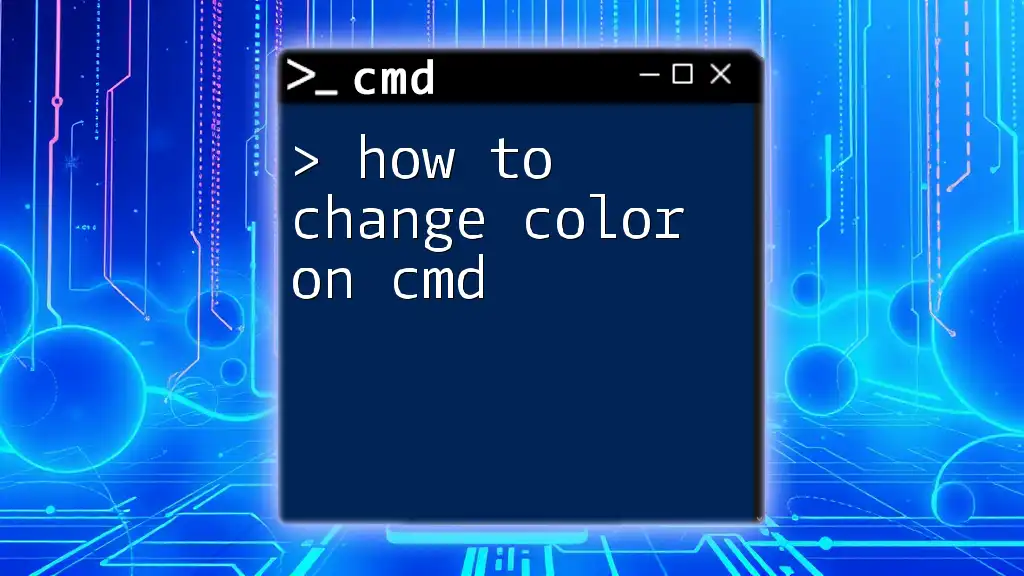
Additional Tips for Customizing CMD Colors
Using Batch Files for Customization
One effective way to manage CMD colors is by utilizing batch files. Batch scripting allows you to automate the color-changing process each time you open CMD.
Creating a Batch Script
You can create a simple batch file. Open Notepad and enter the following lines:
@echo off
color 3E
Save it with a `.bat` extension, say `ChangeColor.bat`. When you run this batch file, it will execute the command to change the color to a specifically defined scheme (in this case, a purple background with yellow text).
Saving and Running the Batch File
When saved, double-clicking the `.bat` file will change your CMD colors instantly, allowing for an easy and quick setup.
Advanced CMD Color Customization with Registry Edits
For advanced users looking for more persistent customization, editing CMD registry entries is an option. However, proceed with caution, as improper modifications to the registry can affect system stability.
To edit colors, navigate to the registry path:
HKEY_CURRENT_USER\Software\Microsoft\Command Processor
You may adjust the `ColorTable` values according to your preferences.
Utilizing Third-Party Tools
There are also many third-party tools available that enhance CMD customization capabilities. These tools can provide additional customization options beyond CMD's innate capabilities, allowing for more robust themes, fonts, and background images.
Troubleshooting Common Issues
Colors not Changing as Expected
If your CMD colors do not appear as set, verify that you have correct syntax. Check for possible conflicting scripts or previously set colors that might override your changes. To restore CMD to its defaults, simply type `COLOR` with no parameters, and it will revert to the original settings.
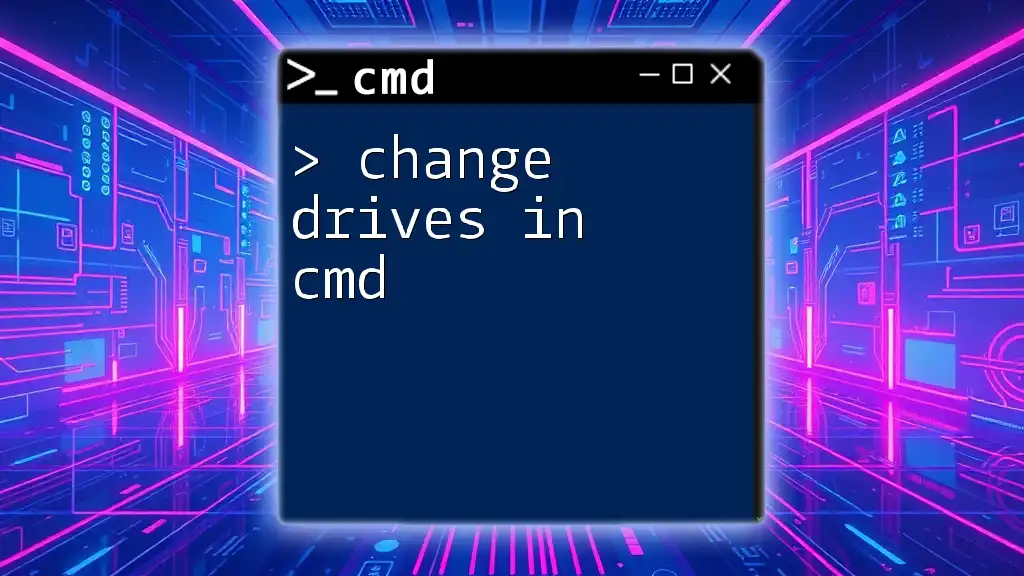
Conclusion
Changing color in CMD is not only about aesthetics; it's an essential practice for improving productivity and personalizing your working environment. By following the guidelines and commands outlined here, you can easily create a command-line interface that caters to your preferences.
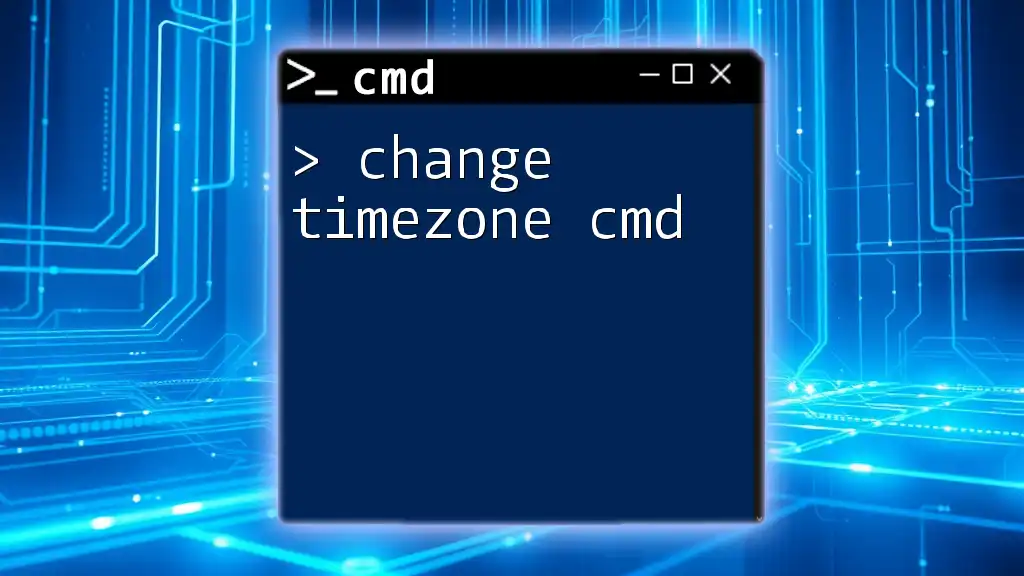
Call to Action
Feel free to share your custom CMD setups! We encourage you to experiment with various colors and shortcuts, enhancing your command-line experience further. Don't forget to subscribe for more valuable tips and guides on using CMD effectively!
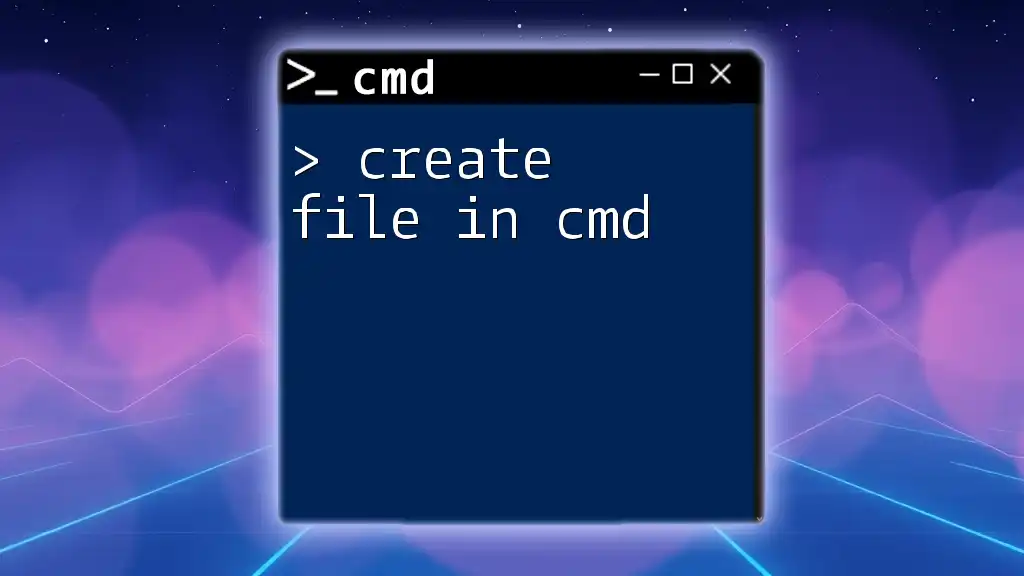
Additional Resources
For further reading on CMD customization and tutorials, check out online communities dedicated to CMD enthusiasts or instructional forums that provide detailed discussions on command-line best practices.

